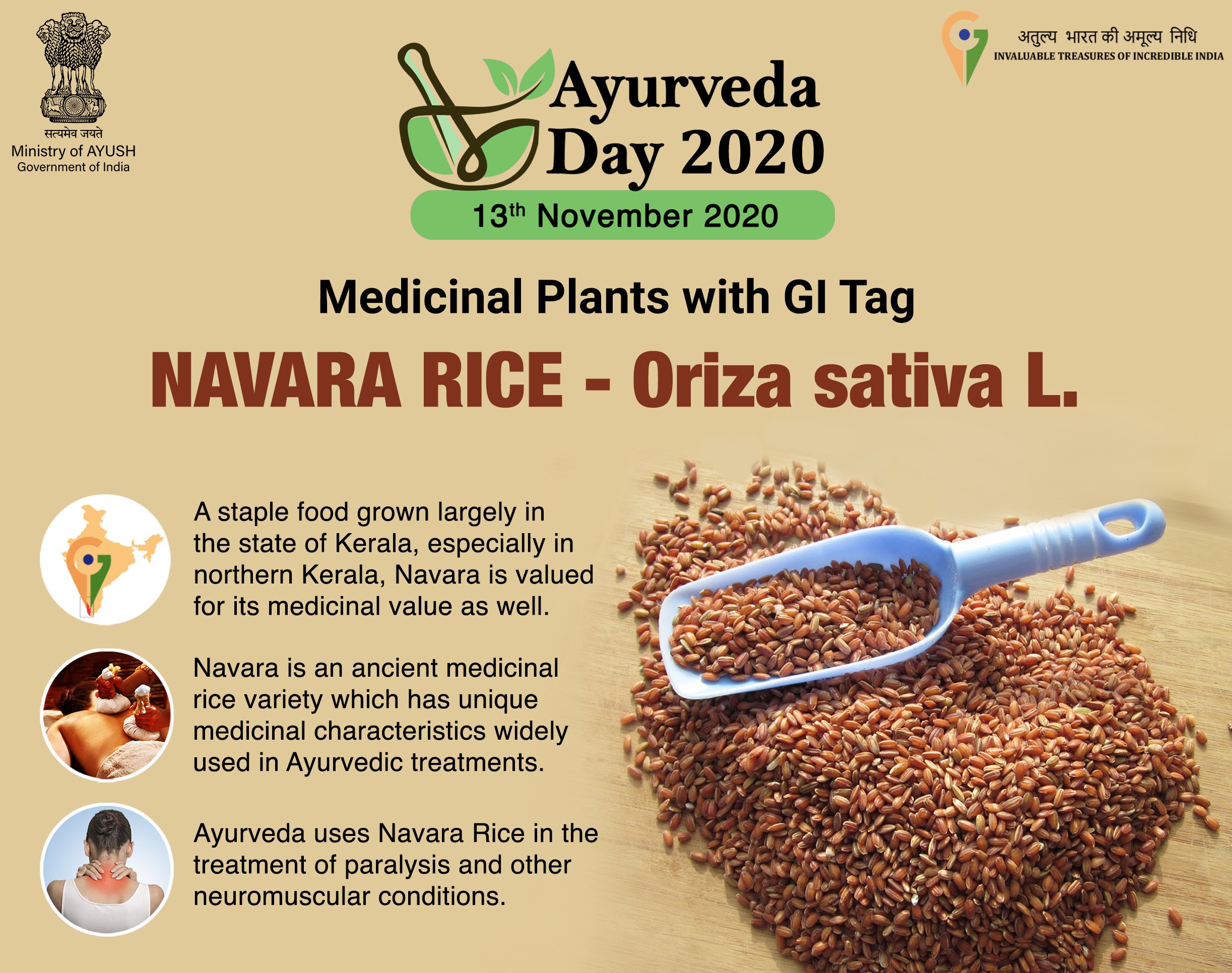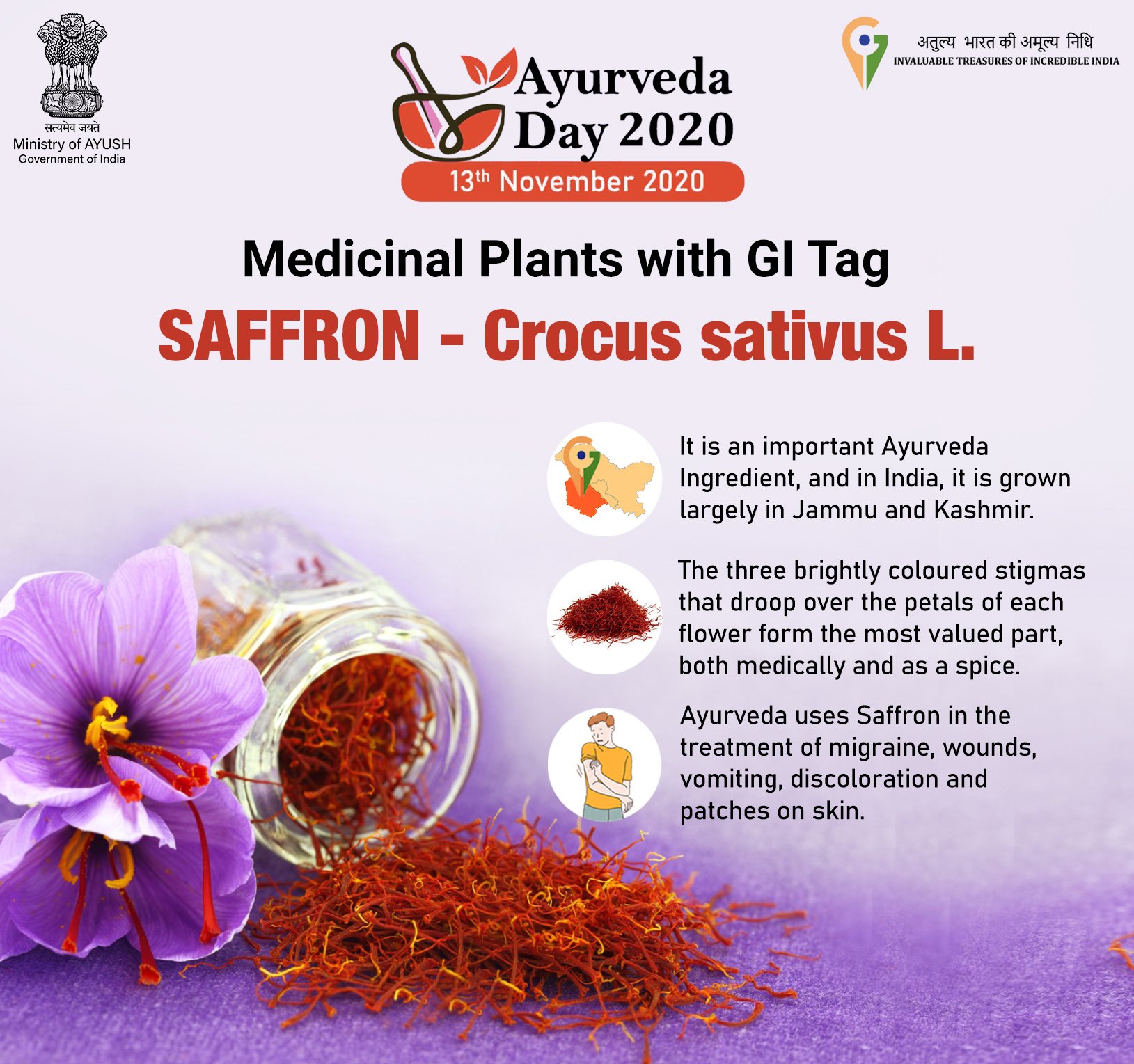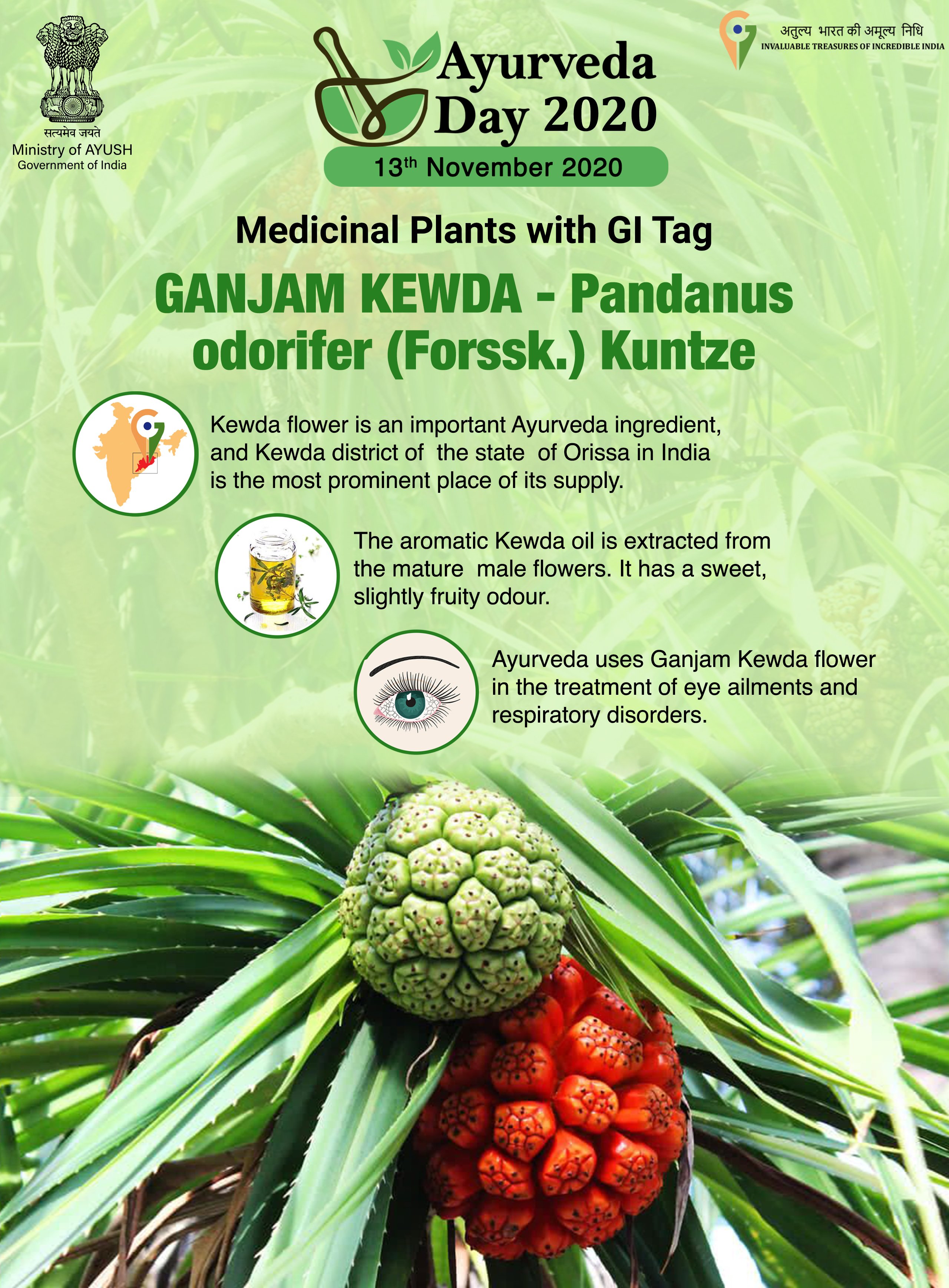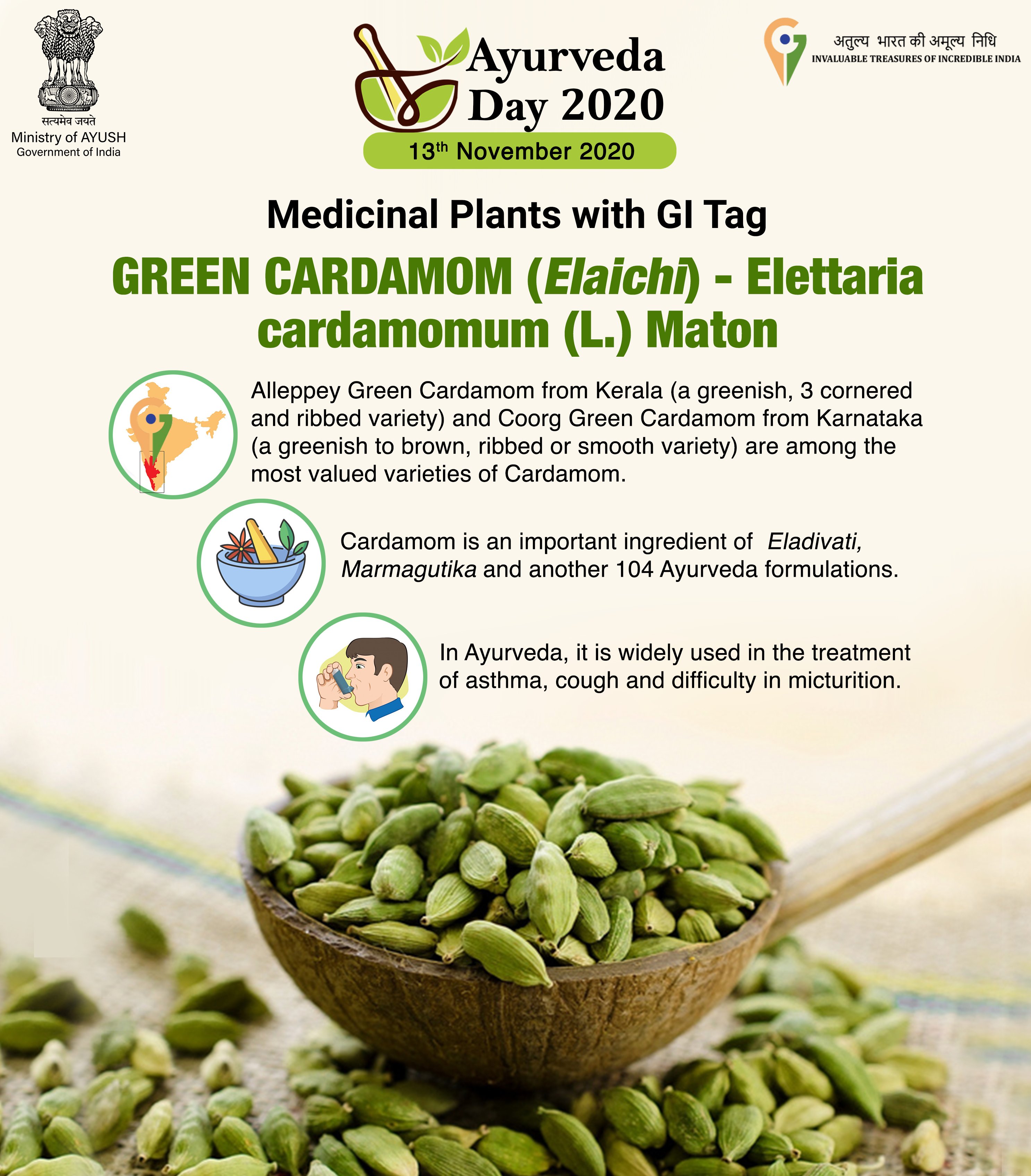A Geographical Indication (GI) is a sign or tag used on agricultural, natural or manufactured products which correspond to a specific geographical location. They are part of the intellectual property rights that comes under the Paris Convention for the Protection of Industrial Property.
Medicinal plants and among the most precious bio-resources of the planet, and are also among the most threatened. GI tagging of medicinal plants is important for quality-assurance and trade, as well as for conservation of these species. It also helps to supplement the incomes of the farmers.
Let’s take a look at a few medicinal plants of Ayurveda that are GI tagged. (The following link will give more details: https://wahgi.ncog.gov.in/homeUrl )
Navara Rice
Oriza sativa L.
“Navara Rice”, known as Shashtikashali in Ayurveda, is cultivated largely in Palakkad and neighboring districts of Kerala. It has wide range of health benefits. It is particularly famous as the critical ingredient of a Kerala panchakarma specialty treatment procedure called Navarakizhi. The Navara rice has curative potential for various diseases like rheumatic pains, polio related disabilities, blood circulatory disorders, and respiratory diseases.
Green Cardamomum
Elettaria cardamomum (L.) Maton
Two categories of Green Cardamom - Alleppey and Coorg– have been GI tagged.
Alleppey Green cardamom is the variety which traditionally came from the southern region of Kerala state, Alleppey (presently Alappuzha) having the been the port city from which it was exported in olden days. It is kiln dried, has a reasonably uniform shade of green colour and is 3 cornered with ribbed appearance. Coorg green cardamom is grown in southwest Karnataka. It is unique in its colour, size, chemical compounds and oil content. The colour range varies from greenish to brown. Its global dry skin can be ribbed or smooth, and pedicels are separated.
In Ayurveda “Green Cardamom” is known as Sukshma-ela and Elaichii. It is used in treatment of Asthma, Cough and in difficulty in Micturition.
Ganjam Kewda flower
Pandanus odorifer (Forssk.) Kuntze
“Kewda flower” also known as Ketakipushpa in Ayurveda obtained GI tag for the state of Orissa where it is extensively cultivated. It is associated mostly with the Ganjam district. It is a well-known scent producing and flavoring agent. As medicine it is useful in treatment of eye ailments and respiratory disorders.
Saffron
Crocus sativus L.
“Saffron” also known as Kumkuma in Ayurveda obtained GI tag for Jammu and Kashmir where it is extensively cultivated. It is a well-known spice. As medicine it is used in the treatment of migraine, wounds, vomiting, discoloration and patches on skin.


























